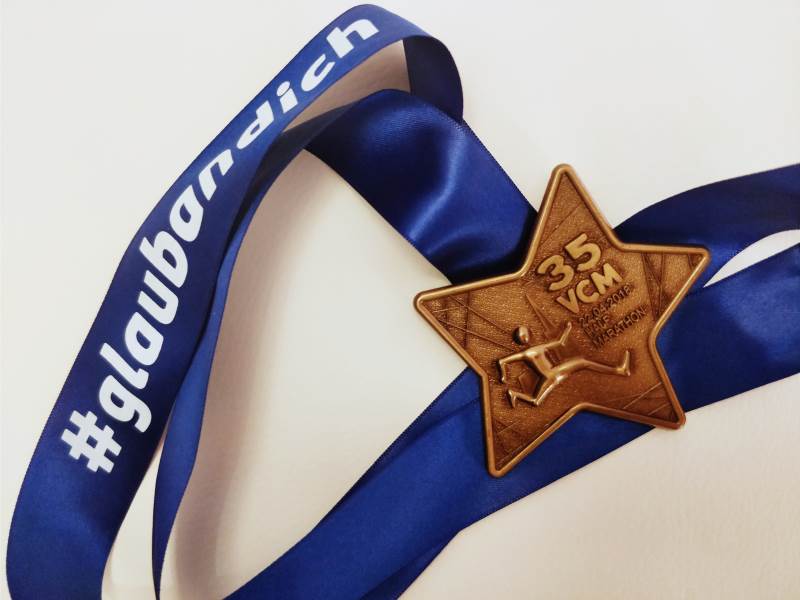Three years ago in 2015 I started a sabbatical with a couple of commitments, among which was to run a half marathon. The challenge felt invigorating and extremely exciting. For two and a half months I’ve trained hard and got to the finish line. Sadly, in the race I broke my left leg due to what is known as a stress fracture.
I never gave up on the challenge and that single episode motivated me to make sports an important part of everyday life. The post-injury recovery process wasn’t short. For 6 months I couldn’t run at all and for 6 more months I had to carefully balance pain and training. My training consisted of gradually increasing load and having sufficient time for the body to adapt. In 2017 I signed up for a half-marathon in Madrid but resigned last minute due to suspicious pain. I didn’t want to sabotage my long-term health and progress for the sake of one race.
Finally, two and a half years and several thousand kilometers later I have successfully finished a half marathon! Without the broken bones and drama! Last Sunday I’ve crossed the line of the 35th Vienna City Half Marathon, finishing in 2 hours 1 minute and 2 seconds.

For the past year my training regime consisted mostly of increasing weekly mileage and running time. I’ve been averaging between 25 and 50 kilometers every week, doing roughly 3-4 runs. For me the primary objective was to prepare the body for physical stress so as not to repeat the previous mistake.
12 weeks before the race day I’ve signed up for a training program. Since I’m a premium Strava member I have access to customizable training programs. These programs were developed by a company called McMillan training. I found their programs easy to follow and to understand. There’s a clear step-by-step process to choose the right program. Furthermore, the service provides specific training speeds to use for each workout, as well as the estimated race-time tempos. I think these programs have much more substance than the programs that are based on increasing mileage. I have more faith in the programs that emphasize training time and effort over distance.
I admit I don’t strictly adhere to training programs. I shuffle sessions around to fit in with other commitments and fun things, like cycling rides and tours. Perhaps it wasn’t wise of me to go for a two day bikepacking tour just week before the race but I couldn’t ignore the sunny dry weather outside and miss a chance to ride.
Before the race I had set three imaginary goals for myself:
- Bronze: to finish without any injury
- Silver: to finish within 2 hours
- Gold: to finish within 1 hour 50 minutes
Of these three I achieved only the first one and I’m content with the result. The week leading up to the race was brutal. The final easy run before the race felt hard and my heart was 5-8 beats above the expected level. I couldn’t sleep very well the night before the race and it was extremely hot for spring in Vienna, with temperatures of 27C in the shade. During the whole race my heart was definitely above the threshold, 40% of the time staying above 190! The body was really struggling and I gave everything I could, no reserves remaining. These abnormally high figures were even worse than my first ill-fated half marathon.
The cardiovascular challenges invalidated all my race plans. I could keep the planned tempo for the first 5 kilometers but couldn’t steadily hold the increased speed for the next 10. At around 13th kilometer I experienced something known as a side stitch, a sharp pain below the right side of the chest. It’s hard to say what’s the ultimate root cause but I suspect there were multiple reasons.
Following the race on Sunday I walked around Vienna, accumulating something around 20 extra kilometers. I flew back from Vienna on Monday morning and worked like nothing ever happened for the rest of the day at home. On Tuesday I went for a team CrossFit training and today I went for 10K jog. In other words, I feel great!
My long-term ambition remains to complete a full-distance IronMan race. As a next step, I’ll be working on my swimming skills and preparing for a full marathon later in the year. A full marathon is a completely different challenge. Surprisingly, it is not necessarily harder because the tempo is more relaxed and it stresses a body in a different way. I realized that a marathon is within reach after doing a 30.9km run for fun last Christmas.